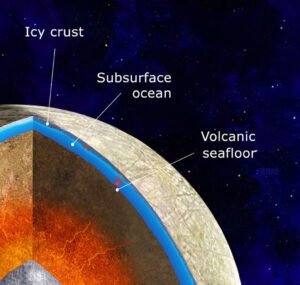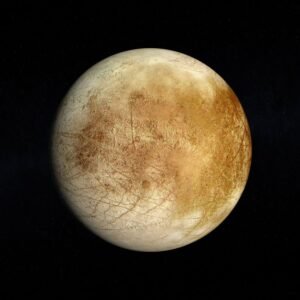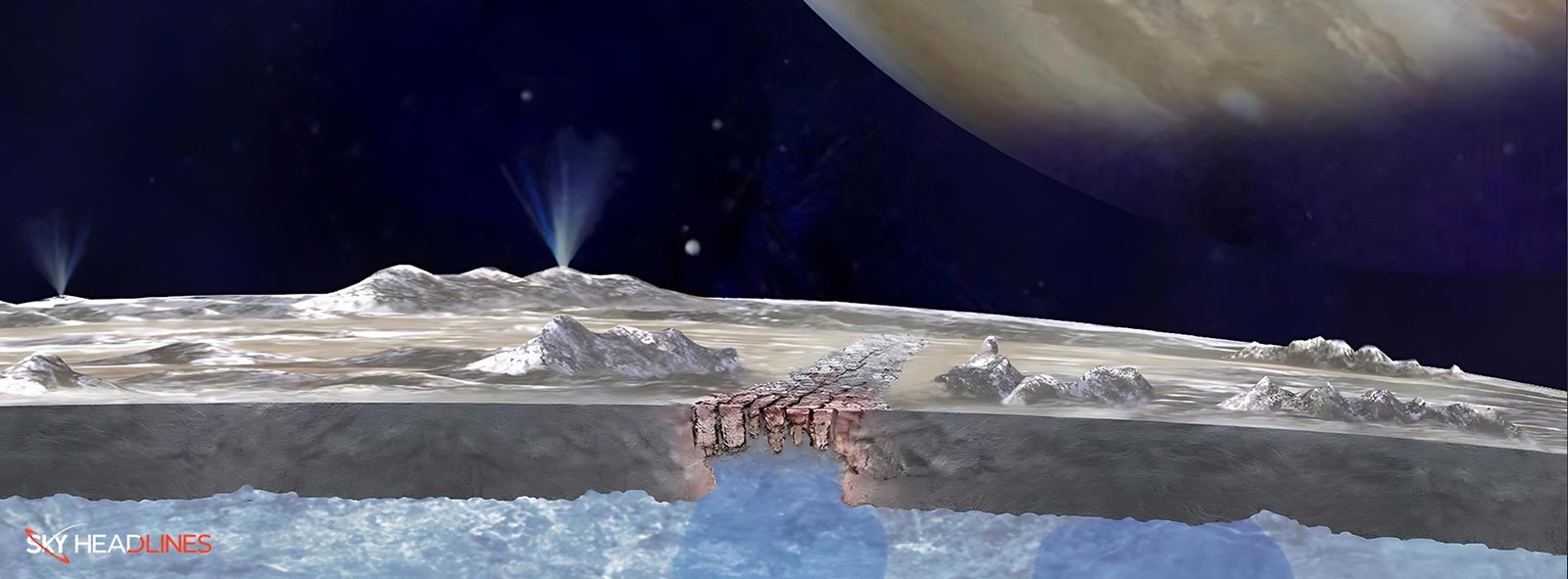For centuries, Mars was the prime part of our solar system, so let’s have a look at life on Europa.
Telescopes have scrutinized the red planet for years, spacecraft have traveled its orbit, and rovers have combed its terrain, but still, no conclusive evidence of life on Europa has been found.
Scientists are shifting their gaze to Europa, Jupiter’s fourth-largest moon among a staggering 67 known moons.
There’s a growing belief on the fact that there is life on Europa may hold a greater promise for life than Mars.
The three ingredients vital for Europa are flowing water, organic molecules, and a source of energy. Evidence suggests that Europa may harbor all three.
Life on Europa: The Liquid Water
Despite its frigid conditions and ice-laden exterior, scientists theorize that Europa has an ice “crust” several kilometers thick.
Beneath this crust, they suspect, lies a liquid-water ocean as deep as 100 kilometers. It’s believed that this ocean houses a plethora of dissolved ions, such as magnesium, sodium, potassium, and chlorine. Given the fact that organisms on Earth thrive in ion-rich environments, it’s plausible that life on Europa could have the same.
Building Blocks of Life on Europa

From data collected by spacecraft, we know that Europa’s surface is primarily water ice.
Jupiter’s radiation bombards this ice and other surface elements, potentially transforming them into life’s fundamental building blocks. Oxygen (O2), hydrogen peroxide (H2O2), carbon dioxide (CO2), and sulfur dioxide (SO2) are among these possible components.
Should these chemicals seep to the ocean floor if we talk about the life on Europa, they could be instrumental in sparking and sustaining life. The water from this ocean may interact with the underlying rock and mineral formations, releasing vital nutrients that aid in the growth of life.
Europa’s Energy Source
Europa orbits close to Jupiter, which exerts a formidable gravitational pull. Consequently, Europa is locked in a synchronous orbit, with one side perpetually facing Jupiter.
As life on Europa is a very interesting topic, that is why we should look over its distance from Earth. It fluctuates due to its eccentric orbit, and so does its gravitational tension, causing the moon to expand and contract during each revolution.
This gravitational tug-of-war, along with the gravitational influence of nearby moons, generates heat through friction within Europa.
The heat produced inside life on Europa could be the very force keeping the subsurface ocean from freezing, and potentially sustaining any life that exists there.
At the ocean’s depths, hydrothermal vents could be supplying energy and nutrients from the moon’s core.
We’ve discovered organisms in similar environments, such as Antarctica’s subglacial lakes and Earth’s ion-rich hydrothermal vents, suggesting that life on Europa has an under-ice ocean that could potentially support life.
Evidence of an Underlying Ocean

NASA provides three compelling arguments in favor of an ocean beneath Europa’s surface if we look deeper over life on Europa:
The Galileo spacecraft’s magnetometers detected a magnetic field near Europa’s surface, indicating the presence of a highly conductive material, like salty water, within 30 kilometers of the surface.
Observations of bands, ridges, cracks, and multi-ringed impact formations on Europa’s surface suggest subsurface activity.
Massive cracks and lines on Europa’s surface, akin to tectonic plate boundaries on Earth, imply a mobile layer beneath the crust that permits movement.
The Search for Life on Europa Could Be Simplified
The detection of magnesium compounds on Europa’s surface indicates that water from the subsurface ocean may be reaching the surface via geysers or vents. If so, these eruptions could transport ions and bacteria from the ocean to the surface.
This means that if life exists in Europa’s subsurface ocean, traces of it could be scattered across the moon’s surface, accessible to landers or rovers.
Simply by collecting surface samples, a mission to Europa could potentially discover signs of life or even organisms themselves.
Europa thus emerges as an intriguing target in the search for extraterrestrial life. Some scientists even argue that it presents a more promising prospect than Mars.





